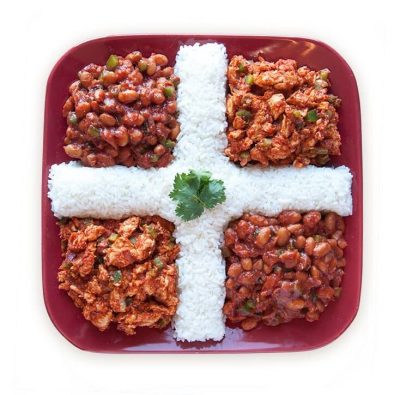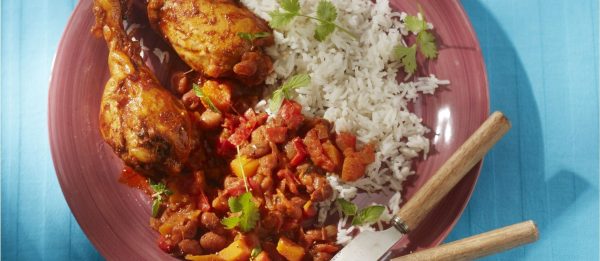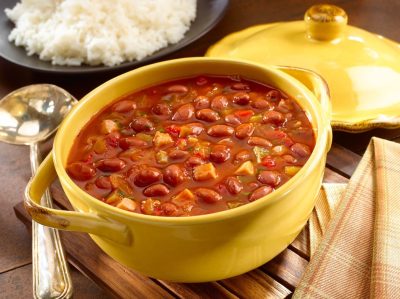History
 There is a rich history surrounding the island of the Dominican Republic. The country lies north of the Atlantic Ocean and south of the Caribbean Sea. It is located on the island of Hispaniola where one-third of the island is occupied by the country of Haiti.
There is a rich history surrounding the island of the Dominican Republic. The country lies north of the Atlantic Ocean and south of the Caribbean Sea. It is located on the island of Hispaniola where one-third of the island is occupied by the country of Haiti.
This island country was explored by Christoper Columbus who claimed it for the Spanish Empire. Columbus claimed the country during his first voyage in December of 1492 calling it the Spanish Island.
The economy in the Dominican Republic is growing at a rapid pace due to tourism and its beautiful resorts that accommodate travelers. The country is also well known for their beautiful rainforests and countryside as well as their multi-culturally influenced cuisine.
Dominican Food
Dominican cuisine has a long list of dishes to choose from for breakfast, lunch, dinner as well as appetizers and desserts. Their food has a combination of African, Spanish, and Taino Indian influences. You cannot go wrong blending these three cultures together when you’re talking about flavorful food pairings. The common staple foods between these countries are rice, beans, and traditional vegetables like lettuce, green peppers, and tomatoes that are simple but will add depth and flavor to each dish.
The commonalities of the African, Spanish and Taino cultures are many, so understanding how we all relate through food is not difficult. Quite a few Middle Eastern dishes have been adopted into Dominican cuisine as well. Their food is also heavily influenced by those of other countries in Latin America and nearby islands like Puerto Rico and Cuba which make for a plethora of unique flavors and creative dishes.
Cultural Island Influences
The Dominican Republic has strong Spanish influences because it was a Spanish colony, and understandably, quite a few of their dishes are incorporated into Dominican cuisine. Food groups that are incorporated are rice, grains, seafood with vegetables, legumes and potatoes as well as plantains and other ingredients. Starches are consumed quite heavily with meals as with many cultures around the world. Starches aid in stretching out a dish for many people and also help to fill and satisfy the belly.
What does La Bandera mean in English
Like Spain, in the Dominican Republic, lunch is the most important meal of the day. La Bandera, which literally translates to “The Flag” in English, is a lunch that consists of red beans and rice with meat (pork chicken beef or fish) and is sometimes served with beans and a salad. This is the number one traditional dish served on the island
This dish is filled with ingredients that satisfy the soul of not only those from the island country but also everyone that truly enjoys hearty and soulful cuisine. As a matter of fact, colorful vegetables are used in making this dish to represent the flag and show pride in their country.
As with most cultures, preparing traditional dishes is a way of expressing love. The traditional food of this Caribbean island may be served often but looked forward to every time. La Bandera is a traditional dish that serves many and has a list of ingredients that are affordable and easy to prepare.
You will start by choosing what type of meat you want to use. Chicken or pork is more commonly used for meat. Meats native to the island are also beef, fish and goat or fish. red snapper and grouper are native to the island. Side dishes are usually a salad, rice, and Dominican beans. These side dish favorites are the perfect complement to this slow-cooked meal as they are filling and hearty. You can also feed quite a few guests and friends by doubling the ingredients if need be.
 Recipe
Recipe
Ingredients
1 lb beef top round steak
2 cloves of garlic
1/2 red onion
Handful of parsley
Dried oregano
Pepper
Adobo seasoning
Worcestershire sauce
Instructions
Be sure to wash your beef or chicken with water and place in a large bowl. Next, add your chopped garlic, parsley, and onion. Add about a teaspoon of ground pepper then season. Add your 1/2 teaspoon of adobo powder. Next, add two tablespoons of Worcestershire sauce mixed well to thoroughly coat the meat. You will want to cover with a lid or plastic wrap and place in the refrigerator for 2 hours to marinate.
To cook, heat a skillet at a medium-high temperature then add your steaks. Five minutes per side and after 10 minutes you can remove and place them on a dish to rest.
 Dominican Beans
Dominican Beans
Ingredients:
1 large can of red beans
1 cup of chicken stock
1 teaspoon of canola or vegetable oil
2 tablespoons of tomato paste
1 stalk of celery
1/4 of the red onion
dried oregano
adobe seasoning powder
apple cider vinegar
bunch of parsley
2 cloves of garlic
lime juice (optional)
Instructions
Cut chopped celery and onion into desired chunks. Peel garlic cloves and leave whole. You will want to tie up the parsley into a knot. Heat oil in the same skillet as your chicken or pork. Add the onions, garlic, and celery, cook until onions are browned, then add your beans and parsley.
You will next begin to add the dry oregano and 1/2 a tablespoon of the adobo seasoning mix. Pour in the tomato paste and one cup of chicken stock. Water can be used as a substitute if you don’t have stock. Just be sure to season a little more so the dish is not bland.
Mix all ingredients until the tomato mixture is fully dissolved. Place lid on your pot or skillet and cook on low to medium heat.
Once all ingredients come to a boil, add a splash of apple cider vinegar. You will want to lower the heat once it starts boiling so your food doesn’t burn.
Add a tablespoon of tomato paste with rendered juices from the steak.
Add your chicken or vegetable stock. Again, make sure all tomato mixture is fully incorporated. Add steaks to the skillet and cover with a lid. Simmer on low heat for 10 minutes. All ingredients will come together and produce tender meat stewed in a rich and herbaceous sauce that will complement those delicious Dominican beans for you to serve and enjoy.
Enjoy Your Dish
Feel free to garnish your dish with citrus fruits or top with sprinkled parsley. You will soon discover why this is a staple dish. The limited number of ingredients and the simplicity of this dish are used in much of our cooking today, so this will be a breeze to prepare. Experimenting with different seasonings and kicking it up a notch with the red beans recipe will probably have you preparing this dish quite often.
There is no need to limit the recipe with these ingredients only. You can use this as your base for any spin on the dish that you’d like. This dish will cover all eating preferences. Vegans or Vegetarians alike will enjoy it. Don’t be afraid to add your own twist to make it suit your taste and family or guest’s preferences.
You can switch up the ingredients by adding different meats like goat, shrimp or fish. Take it to the next level by adding lentils and variations of vegetables and herbs. Also, if you are in the mood you can add as little or as much heat as you desire. There is really no rhyme or reason here. Please do follow the authentic recipe’s version that is given to you here to achieve the most flavorful outcome possible. Your guests and family will love you for it!
It is custom to sometimes garnish your dish with citrus fruits like lime or lemon in Caribbean culture. Utilizing citrus fruit is what really sets it apart from other cuisines, and this helps to add a balance that will help to tone down spice and enhance or bring out flavors in the food. Liberally squeeze lime juice over your meals to help broaden the taste and encourage others to do so as well.
Your side dishes can vary here as well. Traditionally, salad and beans are the favorite go-to options, but plantains are a tasty appetizer served in Caribbean dishes. They look like bananas but are quite different in taste as they have to be cooked. Deep or shallow frying is the more popular cooking method, but they can also be boiled stewed or candied. Depending on what you use to fry and coat them, this can quickly satisfy your vegetarian or vegan friends or family members by frying the plantains in coconut or vegetable oil.
The combination of Taino, Spanish, and African dishes are all so similar in the use of ingredients, but in some instances are prepared a little bit differently and called by different names than Dominican cuisine. Spices with heat are more common in African and Spanish dishes but are not so frequently utilized in Dominican food.
Dominican food will cover various appetites across the board. Exploring new dishes and recipes are a great way to get you started in increasing your flavor palette. If you are a meat-eater or veggie-lover, you’re sure to find something delicious that you’re able to make for yourself that will have you feeling as if you’ve stepped out of your kitchen and onto the islands.
Food and drinks in the Dominican Republic are filled with unique ingredients that are sure to take your taste buds on a journey. Their rice dishes, soups, stews, desserts, and beverages are worth trying out at your nearby Dominican restaurant or getting hold of a recipe and making it for yourself.
The ingredients used in Dominican cuisine span across the globe and make their food dishes relatable for all cultures. There are some geographical differences from country to country but food gives us the ability to all come together and share common ground with one another and help to unite us as people. Expanding your food choices and trying new dishes can be exciting. It’s a great way to learn about different cultures and how they utilize ingredients which gives you a history lesson every time you take a bite.

